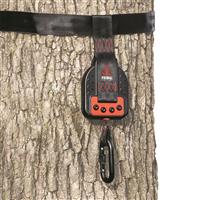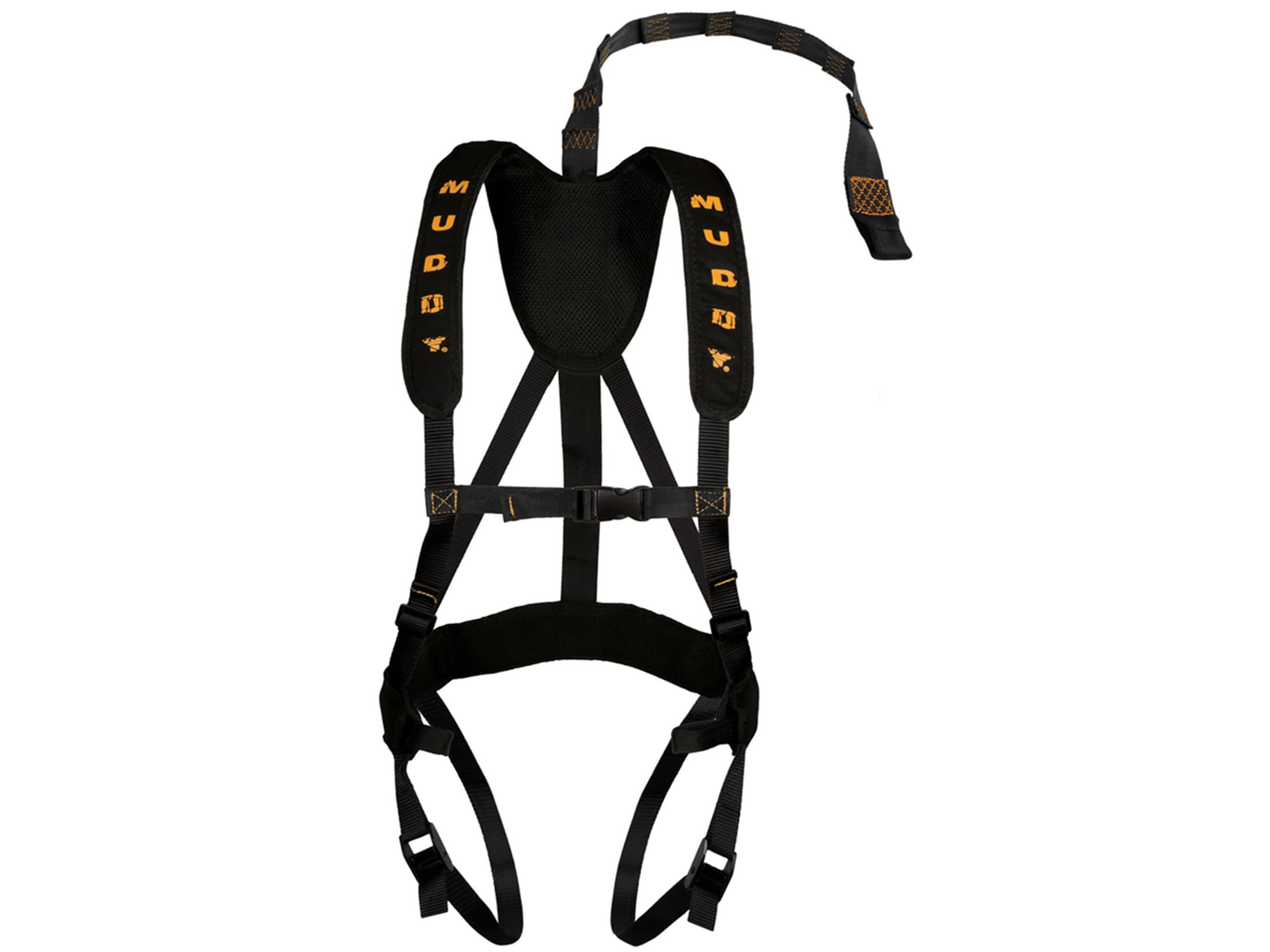I also use a muddy safety harness. I like it very much. It is small light easy to put on unlike the vests which can be restrictive hot and very heavy. I use it with a climber.I use a muddy. I fully trust it. I'm a union sprinkler fitter and it's pretty similar to the full body harnesses we have to wear at work when we're 80ft plus in the air hanging pipe. I've never used it with a climber setup though. I only use hang on tree stands
You are using an out of date browser. It may not display this or other websites correctly.
You should upgrade or use an alternative browser.
You should upgrade or use an alternative browser.
Safety Harness suggestions
- Thread starter birddog 68
- Start date
 Help Support Long Range Hunting Forum
Help Support Long Range Hunting Forum
I just saw that system. I like it and I still like my HSS Vest with wider straps with car seat buckles dnd chest strap, And Ilike the vest with the pockets for easy access. When i am in a stand it might be from 0500 to 1900 so I usually have pulled up some comfort items ad hang net to my stand. and umbrella for sure sun, rain, snow.
On thing that you should have on all harnesses is an arrest system even if it is the safety stitching that break apart to slow the JERK of a fall.
Or a decent safety system that lowers you to the ground if a fall occurs.


 ads.midwayusa.com
ads.midwayusa.com
On thing that you should have on all harnesses is an arrest system even if it is the safety stitching that break apart to slow the JERK of a fall.
Or a decent safety system that lowers you to the ground if a fall occurs.

Primal Tree Stands Descender Fall Arrest System
Sportsman's Guide carries top-quality discount Outdoor and Hunting Gear, Guns, Ammo, Fishing Supplies and more - all at great low prices!
www.sportsmansguide.com

Muddy Mag Pro Treestand Safety Harness Nylon Black
Enjoy the hunt in comfort and convenience with Muddy’s Magnum Pro Harness. Featuring thick-padded shoulder straps, mesh breathable back, and...
Any harness is better than nothing. My hunting buddy use to give me  about my sticks and hang on stand and harness. They have old ladder stands about 10 ft high and don't wear anything . My buddy fell off the platform and needed shoulder surgery to repair the damage. So any is better than none.
about my sticks and hang on stand and harness. They have old ladder stands about 10 ft high and don't wear anything . My buddy fell off the platform and needed shoulder surgery to repair the damage. So any is better than none.
Hunting accidents can and do happen — and they can have tragic consequences. Safety awareness is an essential part of hunting. As a hunter, knowing common hunting accident injuries helps you avoid circumstances that lead to hunting injuries. Even seasoned hunters may be surprised by the most frequent cause of hunting accident injuries.
Hunting Accidents Involving Guns
When someone says "hunting accident," gunshot injuries are usually the first thing that comes to mind. Hunting gun accidents happen for many different reasons, including:
- Judgment mistakes of hunters
- Safety rule violations
- Lack of education, practice, and control
- Mechanical failure
Accidents and mistakes also occur when a hunter swings on game, moving the gun or bow toward the target rather than holding still and waiting for the game to move into sight. Careless handling of guns also causes injuries, often to the hunter himself or herself.
Gun experts maintain that most firearm injuries result from pointing a gun in an unsafe direction. They advise knowing where the muzzle is at all times. Diverting your attention even for a split second can have terrible consequences.
Proper training and education, as well as practice shooting and handling firearms is the best ways to avoid weapon accidents. Constant vigilance while hunting is always essential as well.
Tree Stand Accidents Cause Most Hunting Injuries.
While accidental shootings are often associated with hunting accidents, the most common cause of hunting injuries is not gun-related. According to national statistics, tree stand injuries and fatalities far outnumber hunting injuries from guns.
Tree stand accidents can be fatal. Victims who survive can end up permanently disabled.
A tree stand typically sits 10 to 30 feet above the ground. Any fall from that height is dangerous. Injuries often include spinal cord or brain damage. The remote location of many tree stands complicates discovery of and prompt treatment for tree stand accident victims.
Basic tree stand safety requires wearing a full body harness and using it properly. While this safety measure could prevent many accidents, statistics indicate that 85% of tree stand injuries occur to hunters who do not use a harness. An even higher 90% of deaths from tree stand accidents occur to hunters not wearing a harness.
About 40% of tree stand falls occur from the platform itself. Roughly an equal number (23% and 22% respectively) occur while the hunter is ascending or descending the stand, accounting for half of all stand accidents.
Accident cause varies. Slipping on or missing steps and losing grip or balance accounts for 28% of accidents. Breaking straps cause 16% of injuries. Human error accounts for 11% of tree stand accidents. Breaks in the stand or ladder account for 15% of accidents.
Interestingly, the stand type — manufactured, climber, ladder, or homemade — does not make a significant difference in the likelihood of a tree stand accident. Archery and firearm stand accidents are almost equally common, at 45% and 39% of all accidents respectively.
One study estimates that a third of all hunters who use tree stands suffer a fall sometime in their hunting career. Here is a quick run-down of safety measures to help you stack the odds in favor of avoiding an accident when you use your tree stand.
Before you go hunting:
- Use a sturdy tree stand. There are industry standards for commercially built tree stands.
- Practice using the tree stand in both morning and evening hours.
- Inspect your tree stand before and after each use. Look for wear, rust, cracks, missing hardware, and rot. Check straps, chains, and other attachment devices.
- Remove logs, rocks, and other debris on the ground below your stand as a precaution.
- Tell everyone in your hunting group the location of your stand. Leave a map on your dashboard with a note indicating your expected return time.
- Keep a whistle, horn, radio, or cellphone in your pack, along with a first-aid kit and flashlight.
- Wear a full-body safety harness properly (maintaining three points of contact) at all times.
- Attach your stand securely to a healthy tree.
- Harness up before you climb.
- Use a haul line for your gear and keep your hands free when climbing.
- Unload your gun or bow before climbing and descending.
- Wear solid blaze orange or solid blaze pink on the stand and elsewhere as required. (On July 1, 2018, specific requirements went into effect for wearing blaze pink in Virginia instead of traditional blaze orange. You can read the details about wearing blaze pink on the Department of Game and Inland Fisheries website.)
- Don't fall asleep while on your stand — many stand accidents occur after the hunter falls asleep. Stay alert by moving your arms and hands.
Just saw this Summit Tree Stand Harness.
Looks light weight and not like the HSS Vest.
Looks light weight and not like the HSS Vest.
birddog 68
Well-Known Member
That looks like what I'm looking for. Although I do appreciate the many pockets in the vest.Just saw this Summit Tree Stand Harness.
Looks light weight and not like the HSS Vest.
I like my vest!That looks like what I'm looking for. Although I do appreciate the many pockets in the vest.
I use a Gorilla EXO Tech Safety Harness and I love it. Not even sure if you can still buy them but its easy to put on and well made. Luckily I haven't had to find out how good it works but I feel very safe in the tree with it on.
hesse
Well-Known Member
So as a power lineman I make my living using harness every day. Make sure you adjust them as tight as possible that is the most important thing. if they are loose and you fall it will slam you . Also you will have issues if you are hang for more than 2 minutes so do your research and how to get down if you do fall . Be safe